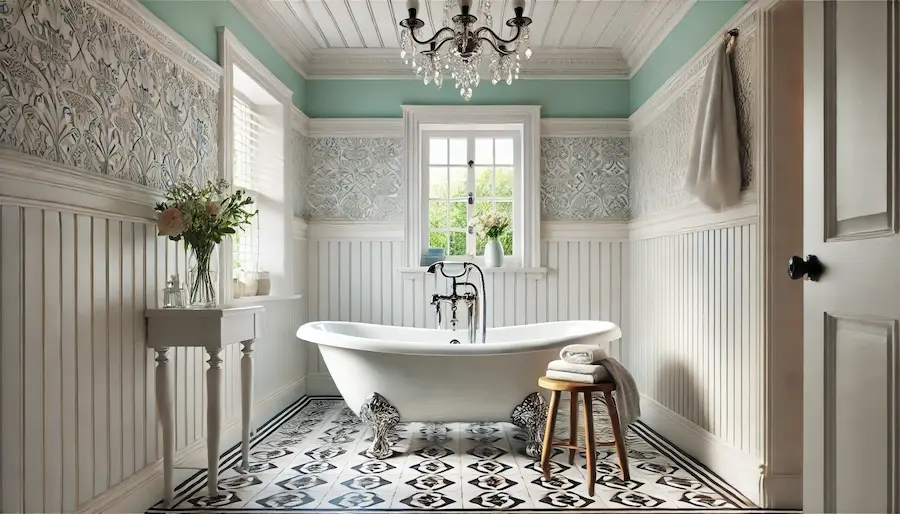A clawfoot tub is a freestanding bathtub elevated on ornamental feet, often resembling animal claws clutching a ball. This design element adds a touch of vintage elegance and timeless charm to any bathroom.
History and Origins of Clawfoot Tubs
The origins of the clawfoot tub date back to the 18th century in Europe, where bathing transitioned from a purely functional activity to a leisurely pursuit. Early designs drew inspiration from regal furniture styles, featuring intricate details like lion’s paw feet or ball-and-claw designs, exuding an air of sophistication and luxury.
In the United States, the clawfoot tub became popular in the late 19th and early 20th centuries, symbolizing luxury and status. The introduction of indoor plumbing and the ability to bond porcelain enamel to cast iron further increased their popularity.
Key Features of Clawfoot Tubs
- Freestanding Design: Clawfoot tubs are not attached to walls, allowing for flexible placement within the bathroom.
- Ornamental Feet: The distinctive “claw” feet come in various designs, such as eagle claws or lion’s paws, often made from materials like cast iron or brass.
- Variety of Styles: Common styles include the traditional roll-top rim, slipper (with a high back on one side for enhanced comfort), double-ended (rounded ends on both sides), and double slipper (both ends are higher and wider).
- Material Composition: Traditional clawfoot tubs are made of cast iron coated with porcelain enamel, while modern versions may use materials like acrylic or fiberglass for lighter weight and easier installation.
Applications of Clawfoot Tubs
- Vintage and Traditional Bathrooms: Ideal for enhancing classic or antique bathroom designs, adding a touch of historical elegance.
- Modern Eclectic Designs: When paired with contemporary elements, clawfoot tubs can serve as a striking focal point, blending old-world charm with modern aesthetics.
- Luxury Spa-Like Retreats: Their deep basins make clawfoot tubs perfect for creating a relaxing, spa-inspired bathroom environment.
Considerations When Choosing a Clawfoot Tub
- Space Requirements: Ensure your bathroom has adequate space to accommodate a freestanding tub, including clearance around all sides for cleaning and accessibility.
- Weight: Cast iron tubs are extremely heavy; verify that your floor can support the weight, especially in upper-level bathrooms.
- Plumbing: Freestanding tubs require specific plumbing considerations, such as floor-mounted or freestanding faucets, which may involve additional installation costs.
- Maintenance: While porcelain enamel is durable, it can chip over time. Regular cleaning with non-abrasive cleaners is essential to maintain the tub’s finish.
Conclusion
Clawfoot tubs bring a blend of historical charm and elegance to bathroom designs, suitable for both traditional and contemporary spaces. When selecting a clawfoot tub, consider factors like space, weight, plumbing, and maintenance to ensure it complements your bathroom’s design and meets your functional needs.
